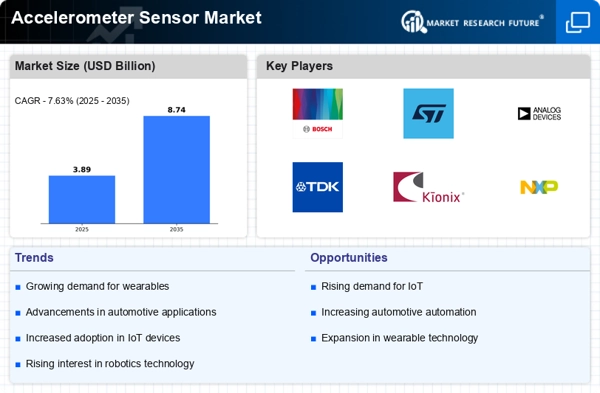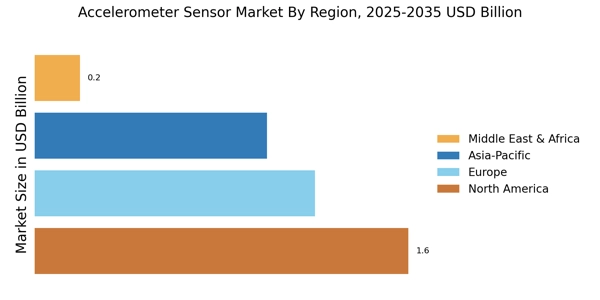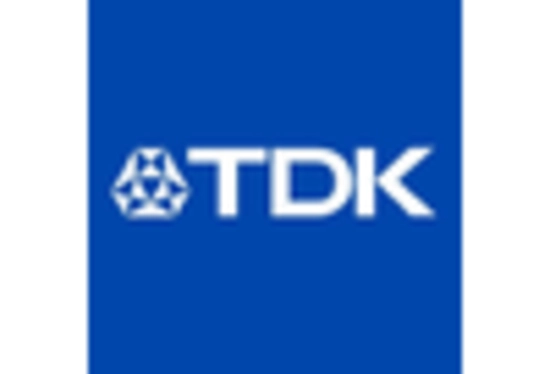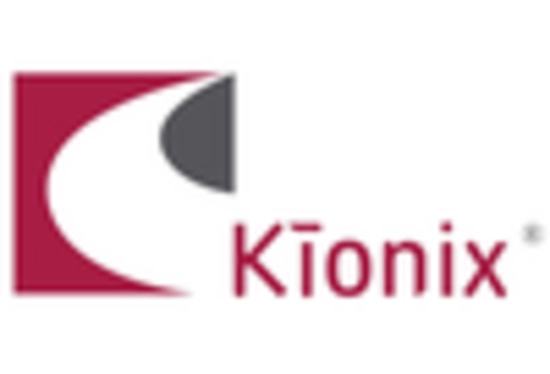Growth in Consumer Electronics
The Accelerometer Sensor Market is witnessing substantial growth due to the rising demand for consumer electronics. Devices such as smartphones, tablets, and gaming consoles increasingly rely on accelerometers for features like screen orientation, motion gaming, and user interaction. The consumer electronics market is projected to reach USD 1 trillion by 2025, with accelerometers being a key component in enhancing user experience. This growth is fueled by technological advancements and the increasing integration of smart features in everyday devices. As manufacturers continue to innovate, the Accelerometer Sensor Market is poised for further expansion, driven by the need for enhanced functionality in consumer electronics.
Emergence of Smart Home Devices
The Accelerometer Sensor Market is benefiting from the emergence of smart home devices. As homes become more connected, accelerometers are utilized in various applications, including security systems, smart appliances, and energy management solutions. The smart home market is anticipated to grow significantly, with estimates suggesting it could reach USD 174 billion by 2025. This growth is attributed to the increasing adoption of Internet of Things (IoT) technologies, which rely on accelerometers for motion detection and automation. Consequently, the Accelerometer Sensor Market is likely to see a rise in demand as manufacturers develop innovative smart home solutions that incorporate these sensors.
Rising Demand for Wearable Technology
The Accelerometer Sensor Market is experiencing a notable surge in demand for wearable technology. As consumers increasingly seek devices that monitor health and fitness, accelerometers play a crucial role in tracking physical activity, sleep patterns, and overall wellness. The market for wearable devices is projected to reach USD 100 billion by 2026, with accelerometers being integral to their functionality. This trend is driven by a growing awareness of health and fitness, prompting manufacturers to incorporate advanced sensors into their products. Consequently, the Accelerometer Sensor Market is likely to expand as more companies innovate and develop new wearable solutions that rely on precise motion detection.
Advancements in Automotive Applications
The Accelerometer Sensor Market is significantly influenced by advancements in automotive applications. With the automotive sector increasingly focusing on safety and automation, accelerometers are essential for features such as electronic stability control, collision detection, and airbag deployment systems. The market for automotive sensors is expected to grow at a compound annual growth rate of 7% through 2027, indicating a robust demand for accelerometers. As vehicles become more sophisticated, the integration of accelerometers into various systems enhances safety and performance, thereby driving the growth of the Accelerometer Sensor Market. This trend suggests a promising future for sensor manufacturers in the automotive domain.
Increased Focus on Industrial Automation
The Accelerometer Sensor Market is experiencing growth due to the increased focus on industrial automation. Industries are increasingly adopting automation technologies to enhance efficiency and reduce operational costs. Accelerometers are vital in monitoring machinery vibrations, ensuring equipment reliability, and improving safety in industrial settings. The industrial automation market is projected to grow at a CAGR of 9% through 2026, indicating a rising demand for sensors, including accelerometers. This trend suggests that the Accelerometer Sensor Market will continue to expand as industries seek to implement advanced monitoring solutions that leverage the capabilities of accelerometers.
















Leave a Comment